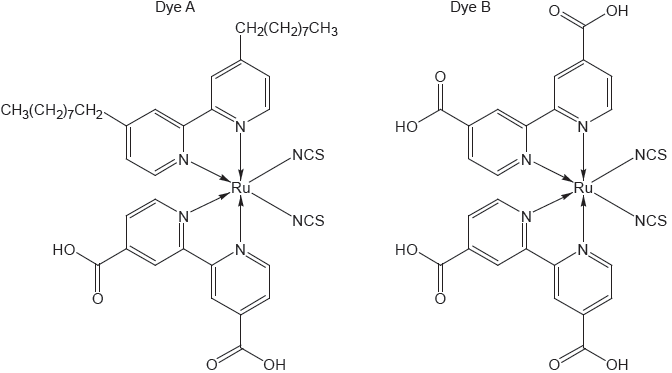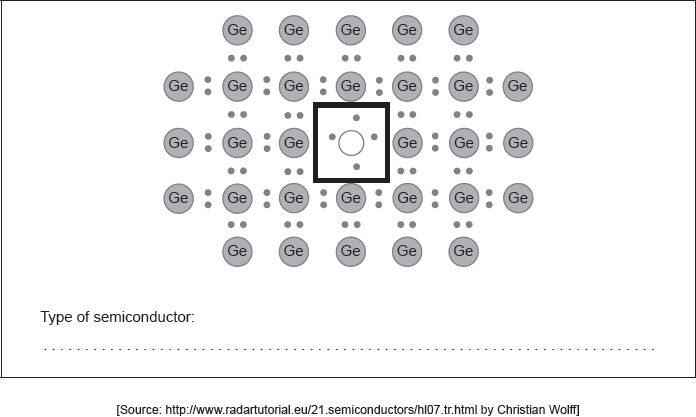| Date | May 2019 | Marks available | 2 | Reference code | 19M.3.hl.TZ2.20 |
| Level | HL | Paper | 3 | Time zone | TZ2 |
| Command term | Explain | Question number | 20 | Adapted from | N/A |
Question
Semiconductors and light-sensitive dyes are used in photovoltaic cells.
Sketch graphs to show the general effect of increasing temperature on the electrical conductivity of semiconductors and metals on the axes below.
Explain the function of dyes in a dye-sensitized solar cell (DSSC).
Markscheme
Semiconductors:
increases [✔]
Metals:
decreases [✔]
Note: Accept any graph showing general increase for semiconductor.
Accept any graph showing general decrease for metal.
Accept a graph showing vertical section below transition temperature for a superconducting metal.
dye absorbs light [✔]
electrons from «excited» dye pass to TiO2/semiconductor/electrolyte/cell
OR
dye undergoes photo-oxidation [✔]
Examiners report
Several candidates managed one mark to show conductivity of semiconductors on increasing the temperature but were unable to show that generally conductivity decreases for metals when the temperature is increased.
The question on dye-sensitized solar cell invited mixed responses. While most candidates correctly stated that dyes absorb light but several failed to mention that electrons from the excited dye pass to TiO2/semiconductor.



